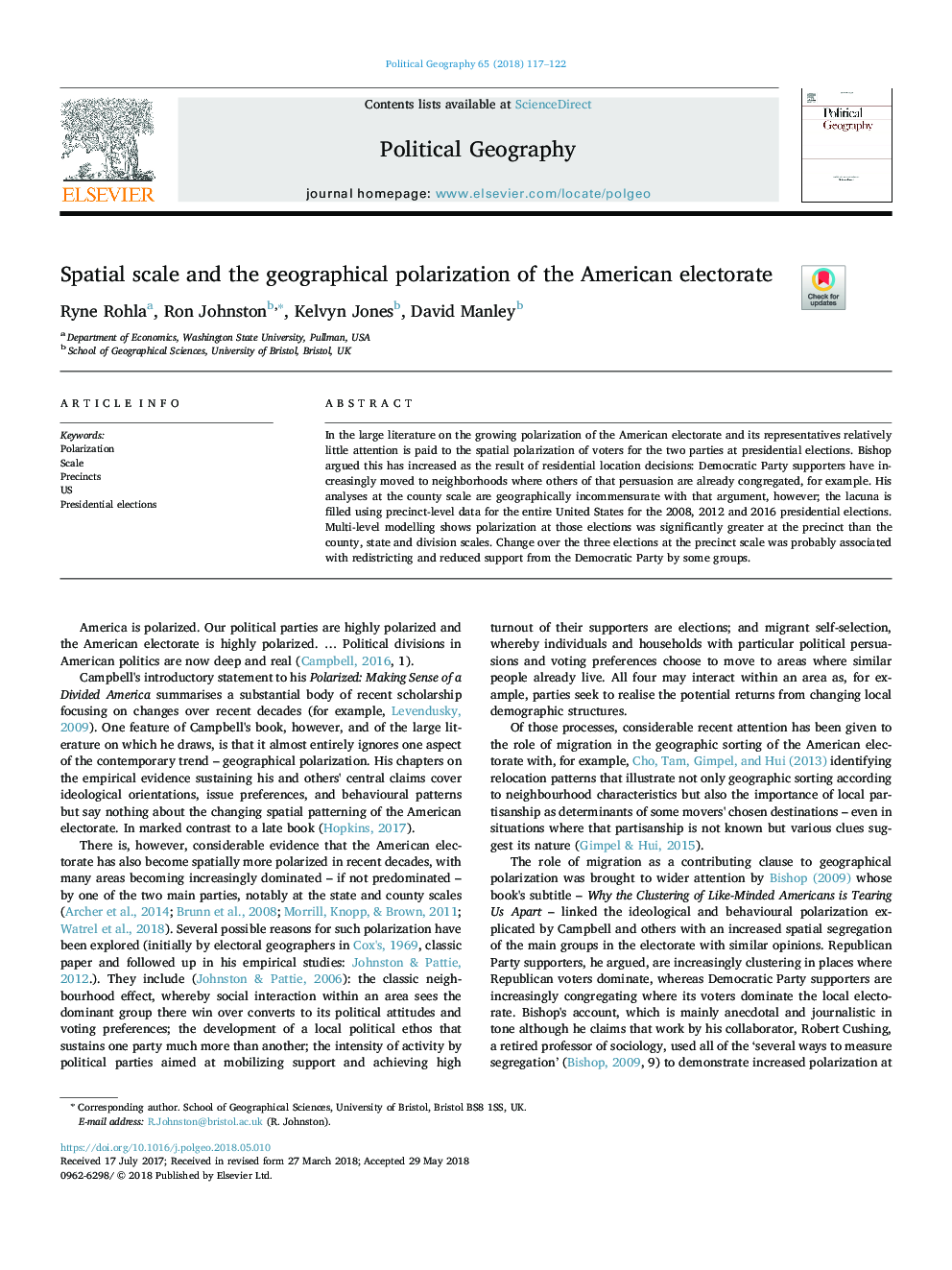| Article ID | Journal | Published Year | Pages | File Type |
|---|---|---|---|---|
| 7492550 | Political Geography | 2018 | 6 Pages |
Abstract
In the large literature on the growing polarization of the American electorate and its representatives relatively little attention is paid to the spatial polarization of voters for the two parties at presidential elections. Bishop argued this has increased as the result of residential location decisions: Democratic Party supporters have increasingly moved to neighborhoods where others of that persuasion are already congregated, for example. His analyses at the county scale are geographically incommensurate with that argument, however; the lacuna is filled using precinct-level data for the entire United States for the 2008, 2012 and 2016 presidential elections. Multi-level modelling shows polarization at those elections was significantly greater at the precinct than the county, state and division scales. Change over the three elections at the precinct scale was probably associated with redistricting and reduced support from the Democratic Party by some groups.
Related Topics
Social Sciences and Humanities
Arts and Humanities
History
Authors
Ryne Rohla, Ron Johnston, Kelvyn Jones, David Manley,
